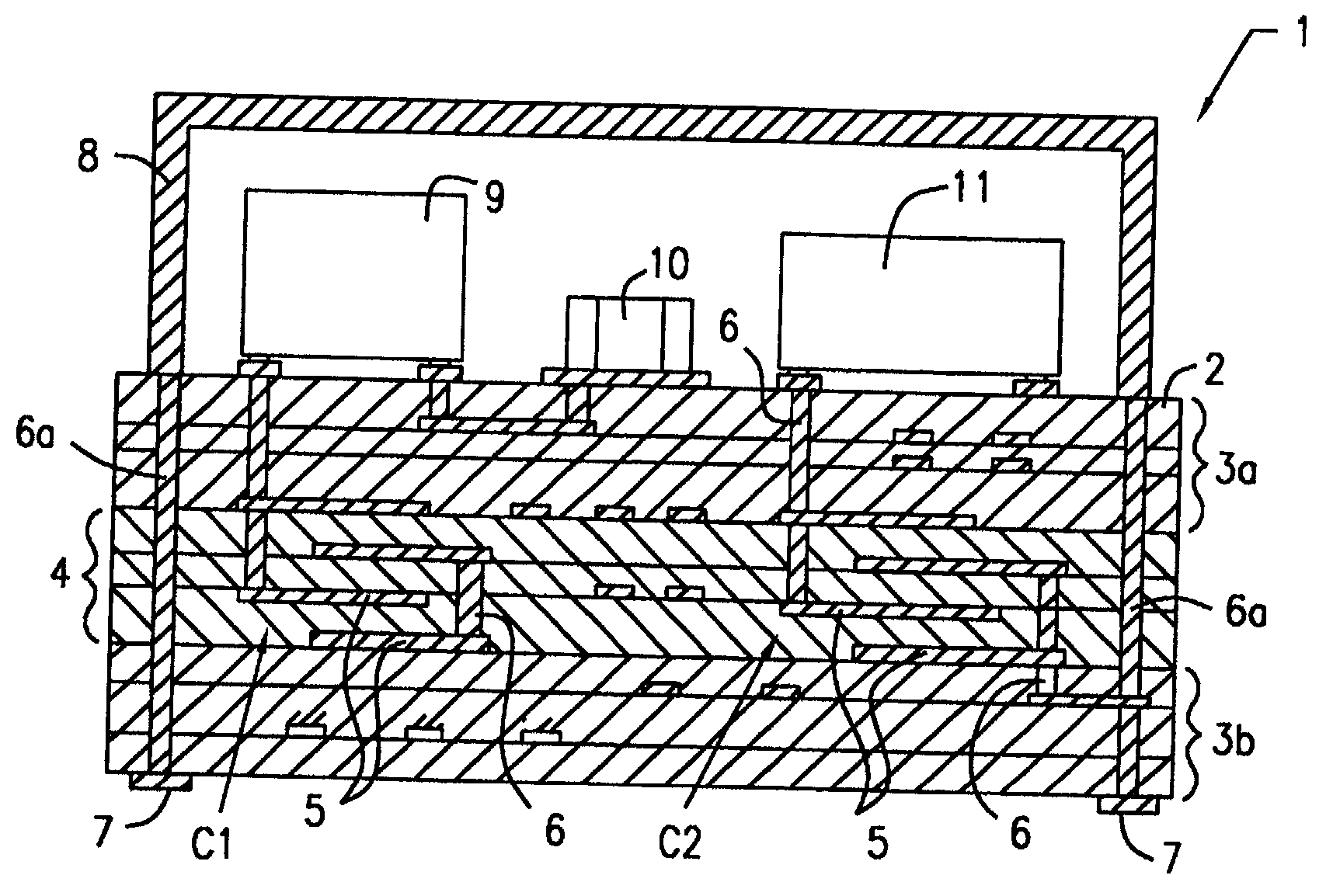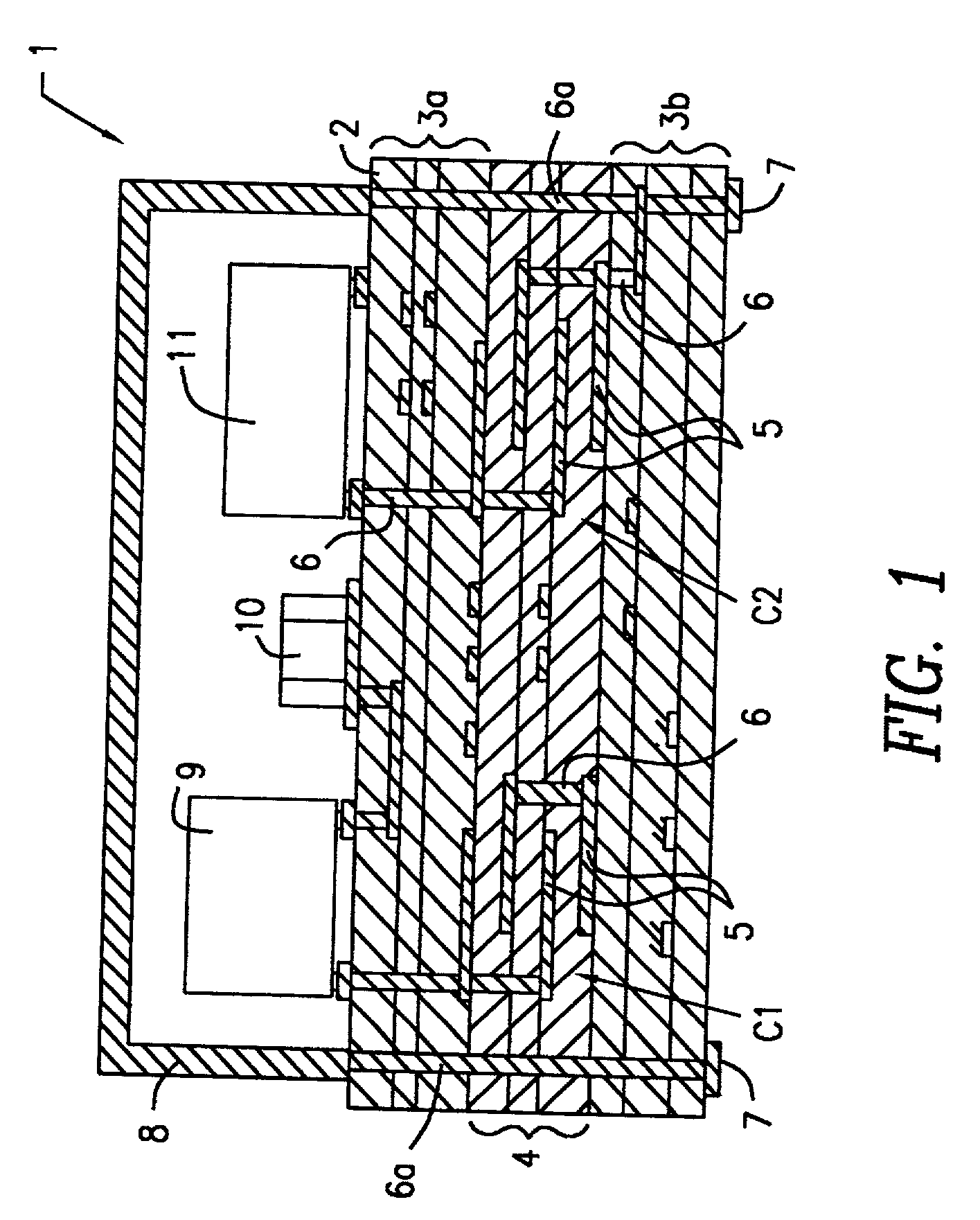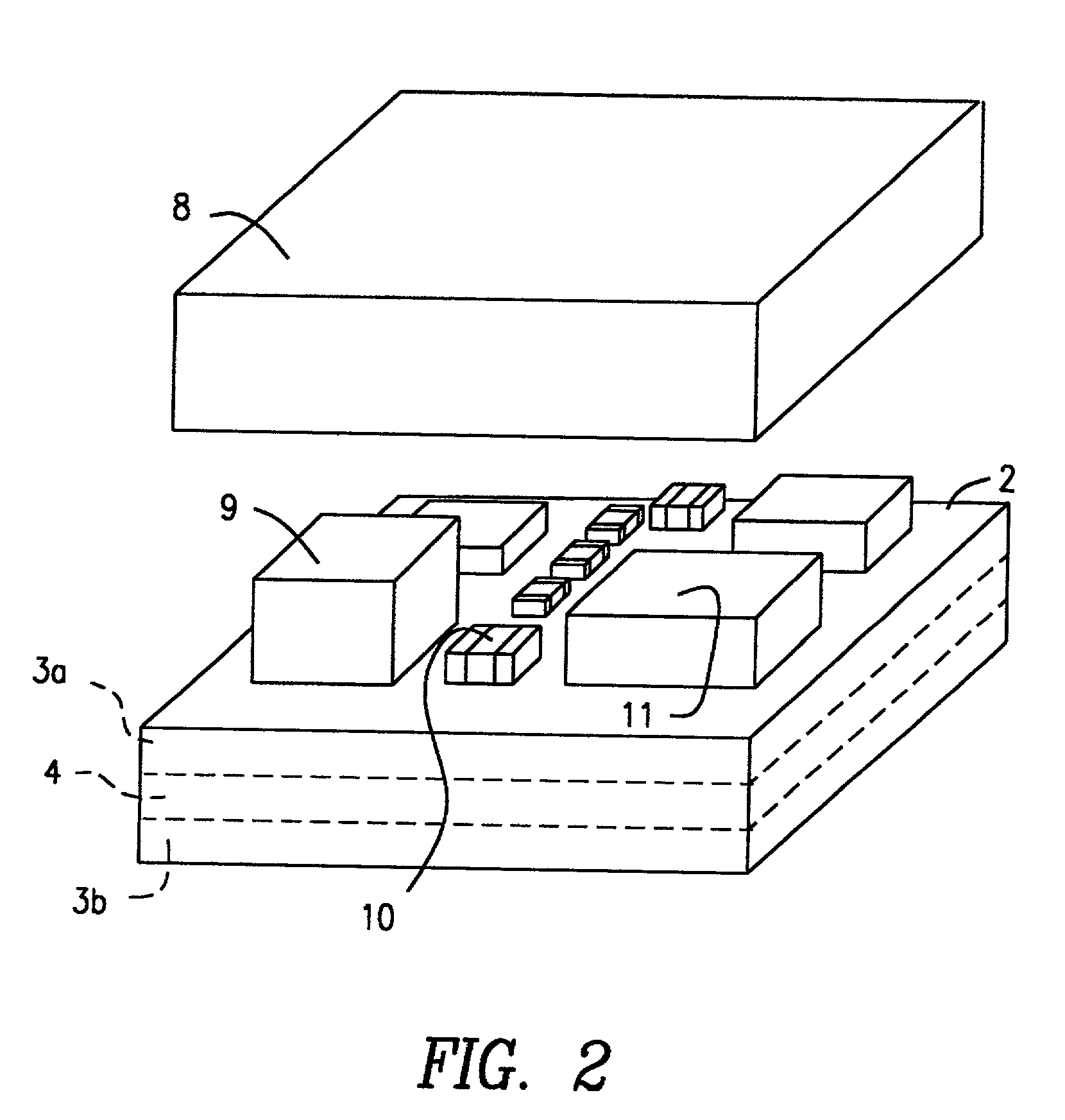Insulative ceramic compact
a ceramic and compact technology, applied in ceramics, solid-state devices, electrical devices, etc., can solve the problems of low mechanical strength and q value type and proportion of deposited crystal phase, and low mechanical strength of substrate materials that can be fired at low temperatures
- Summary
- Abstract
- Description
- Claims
- Application Information
AI Technical Summary
Benefits of technology
Problems solved by technology
Method used
Image
Examples
example 2
[0095] Initially, a Mg(OH).sub.2 powder and a B.sub.2O.sub.3 powder as starting materials were weighed and mixed to yield mixtures each having a stoichiometric composition of Mg.sub.3B.sub.2O.sub.6 or Mg.sub.2B.sub.2O.sub.5, and the mixtures were wet-mixed for 16 hours, and were dried. The dried mixtures were calcined at 1400.degree. C. for two hours and were then crushed to thereby yield a Mg.sub.3B.sub.2O.sub.6 ceramic powder material and a Mg.sub.2B.sub.2O ceramic powder material, respectively. At least one of the two ceramic powder materials was used as a calcined material in the following procedures.
[0096] Next, 20 to 80% by weight of the above-prepared calcined material, a glass powder (sintering aid) having a composition indicated in Table 4, and ZnO and CuO were mixed in the proportions indicated in Table 5, and the mixture was granulated with an appropriate amount of a binder. Each of granulated insulative ceramic compositions, Samples 1 to 46, was molded at a pressure of 2...
PUM
| Property | Measurement | Unit |
|---|---|---|
| temperature | aaaaa | aaaaa |
| temperatures | aaaaa | aaaaa |
| frequency | aaaaa | aaaaa |
Abstract
Description
Claims
Application Information
 Login to View More
Login to View More - R&D
- Intellectual Property
- Life Sciences
- Materials
- Tech Scout
- Unparalleled Data Quality
- Higher Quality Content
- 60% Fewer Hallucinations
Browse by: Latest US Patents, China's latest patents, Technical Efficacy Thesaurus, Application Domain, Technology Topic, Popular Technical Reports.
© 2025 PatSnap. All rights reserved.Legal|Privacy policy|Modern Slavery Act Transparency Statement|Sitemap|About US| Contact US: help@patsnap.com



